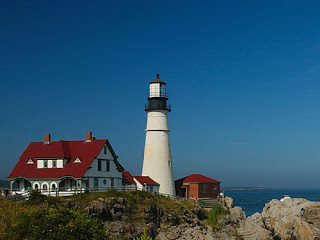In 2020, Rachel Carson National Wildlife Refuge (NWR) is celebrating the 50th anniversary of its renaming in honor of the world-renowned marine biologist, author, environmentalist and former U.S. Fish and Wildlife Service employee, Rachel Carson.
The refuge's year-long celebration marks the formal dedication of the renaming, which took place on June 27, 1970. The 50th anniversary celebration will include an array of virtual and remote events.
During the 50th anniversary celebration, the refuge will be highlighting dozens of opportunities to explore its wealth of wildlife, habitat and natural resources, as well as Rachel Carson’s legacy.
Rachel Carson National Wildlife Refuge, established in 1966 as the Coastal Maine National Wildlife Refuge, is comprised of 11 divisions, which span 50 miles of coastline in York and Cumberland counties, from Kittery to Cape Elizabeth.
Currently at 5,690 acres, the refuge will contain approximately 14,683 acres of various wildlife habitats when land acquisition is complete.
In addition to sheltering wildlife and protecting natural resources, Rachel Carson NWR offers a variety of experiences on public lands.
The refuge contains three main nature trails and many wildlife observation stations featuring every habitat type found on the refuge, hunting and fishing opportunities, interpretive and educational programs, a visitor information center, volunteering opportunities, and other recreational activities.
Anglers can access a variety of tidal fishing spots on the refuge. The fishing season is open year round for saltwater fishing to the head of tide.
Chauncey Creek, Brave Boat Tidal Creek, Ogunquit River, Stevens Brook, Webhannet River, Merriland River/Skinner Mill, Mousam River, Goosefare Brook, and Spurwink River were incorporated into the previous Refuge Fish Plan in 2000.
The 2020 Recreational Fishing Plan expands fishing opportunities available to the public by opening the Little River at Timber Point.
Rachel Carson was a world-renowned marine biologist, author and environmentalist who served as an aquatic biologist and editor-in-chief for the U.S. Fish & Wildlife Service. She has been credited with launching the contemporary environmental movement and awakening the concern of Americans for the environment.
In her writings, Rachel Carson displayed a unique ability to simultaneously engage her own sense of wonder as well as that of her readers through eloquent prose and investigation of natural phenomena and biological processes. Her work helped connect people to nature and inspire environmental stewardship.
Carson regularly summered on Southport Island, where she studied its beach and tide pools to research The Edge of the Sea (1955). Through tireless investigation for her greatest work, Silent Spring (1962), she linked the unrestrained use of post-World War II chemical pesticides with fearsome, biological consequences.
Overcoming industry and government pressure to abandon her research, Carson alerted generations to use chemicals with utmost caution, warning that their improper use would have devastating effects on public health and the environment.
As fitting recognition of Carson’s contributions to conservation after her death in 1964, the refuge was renamed in her honor.
source: USFWS


